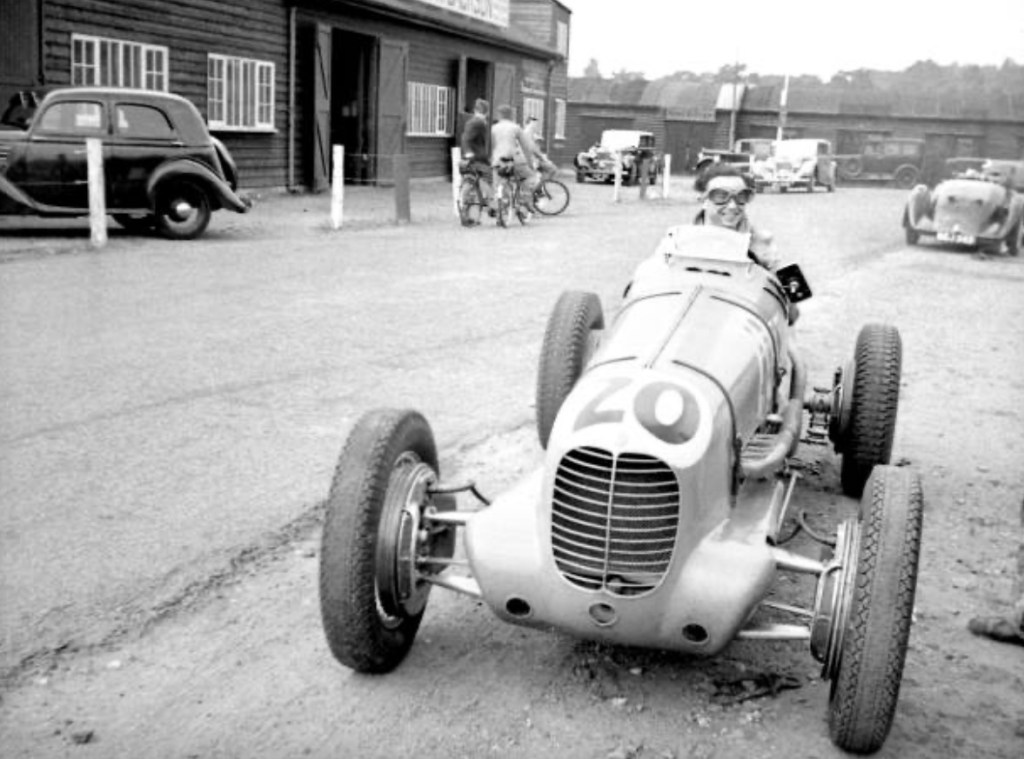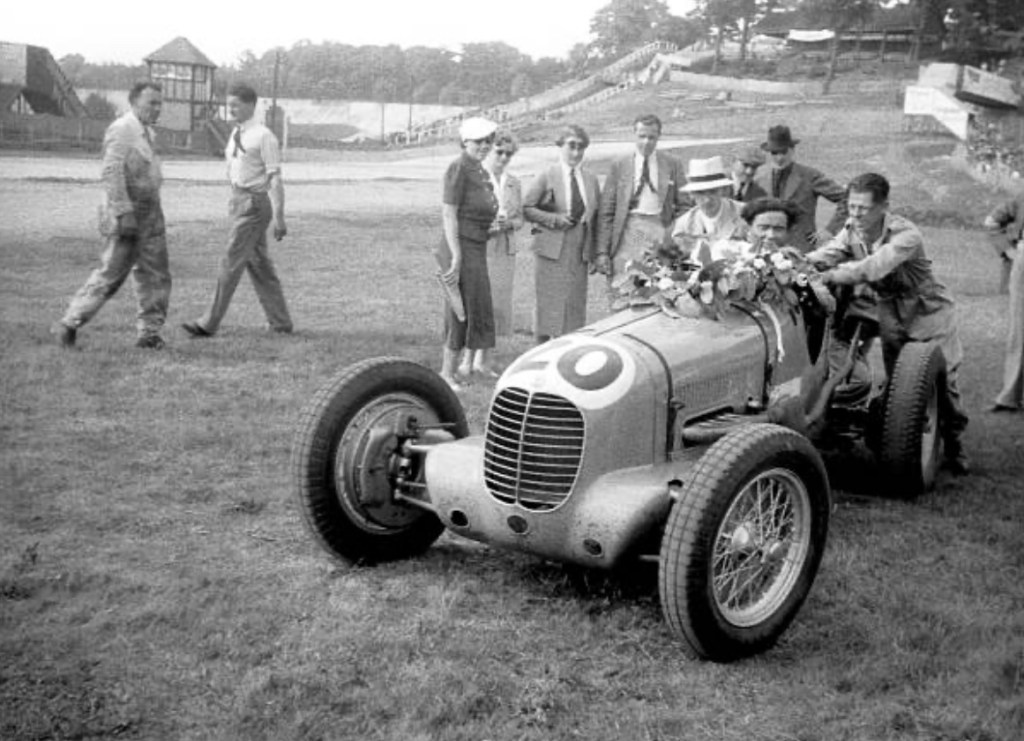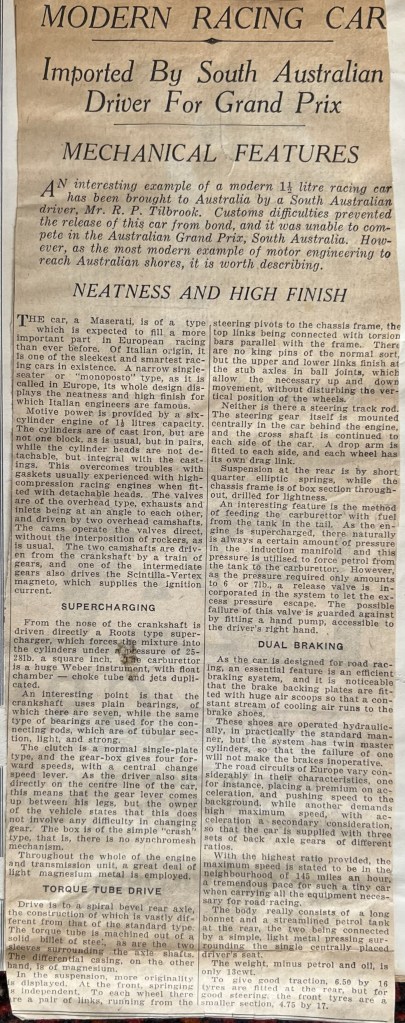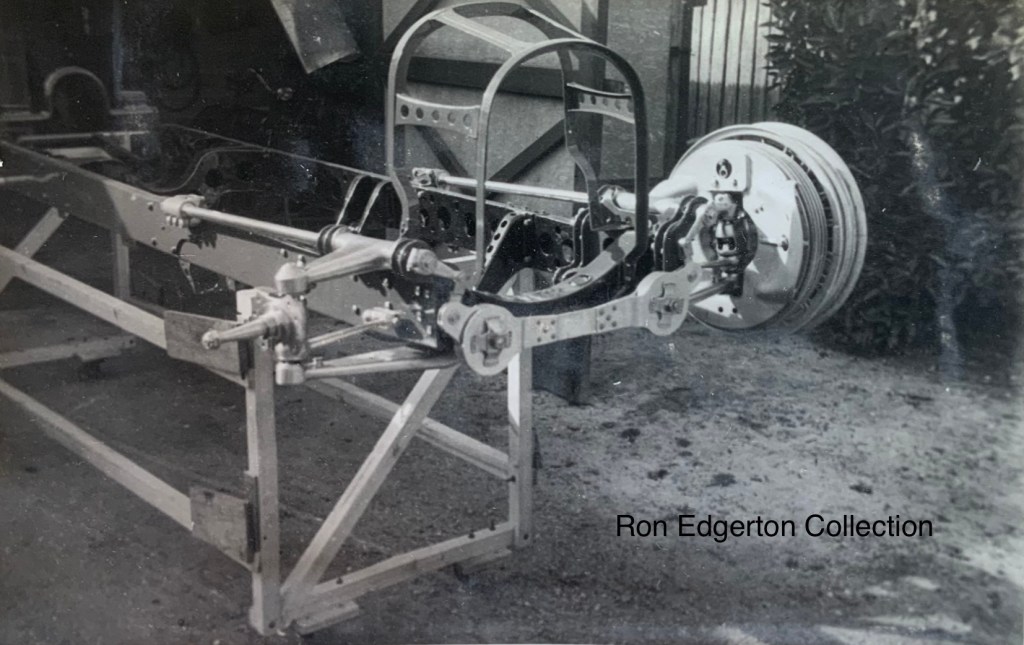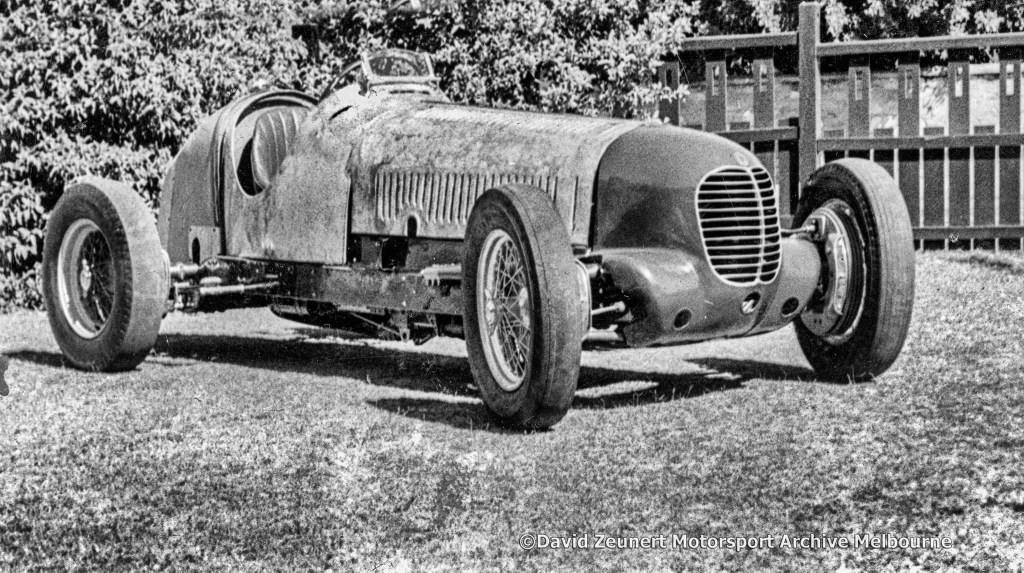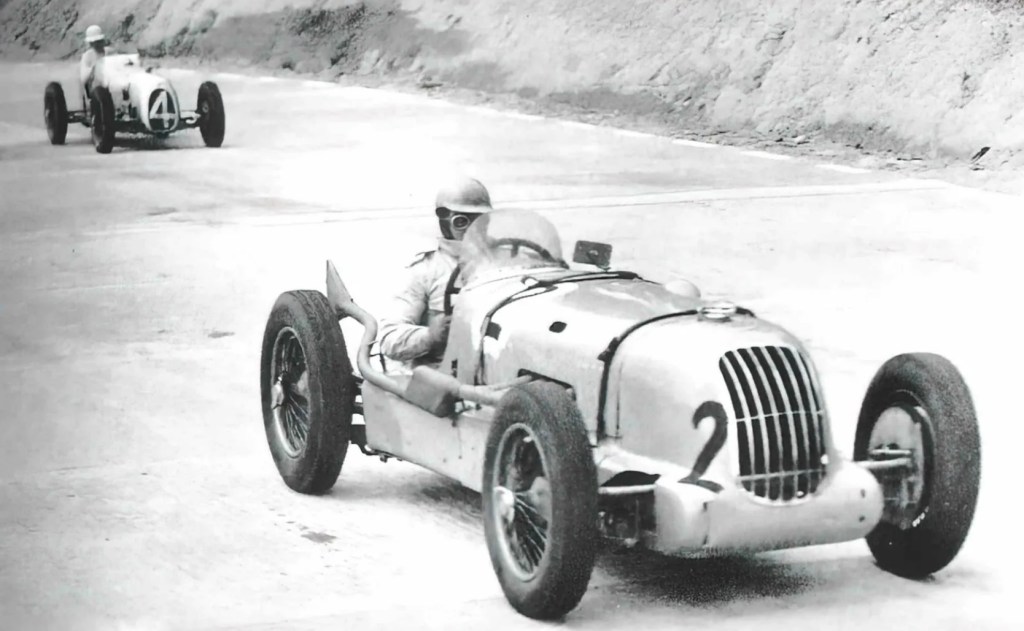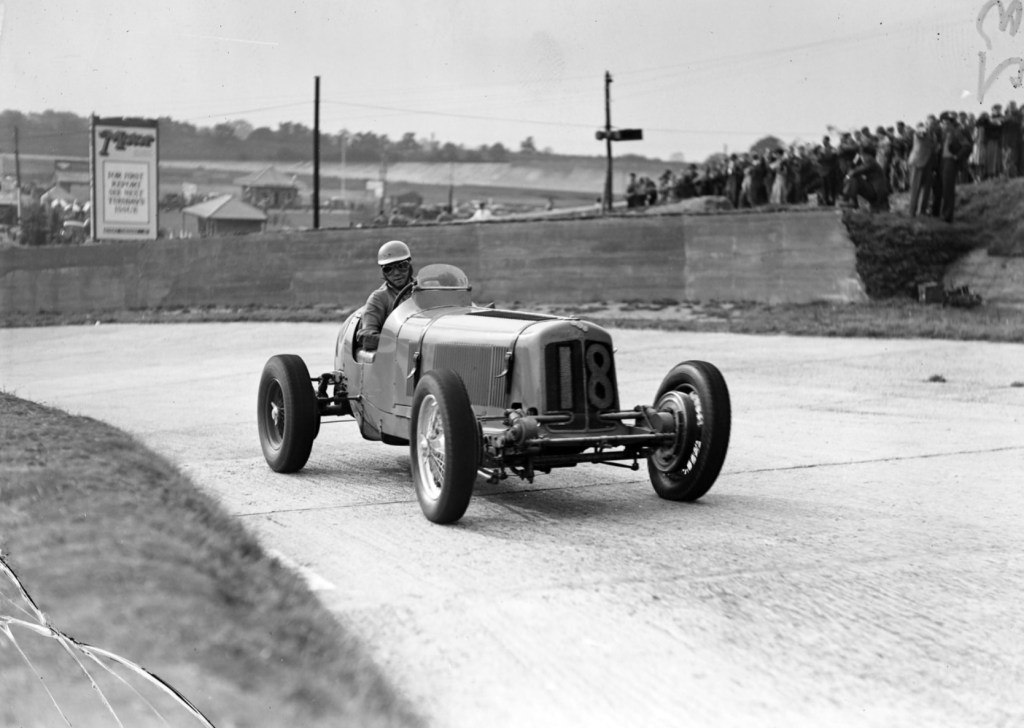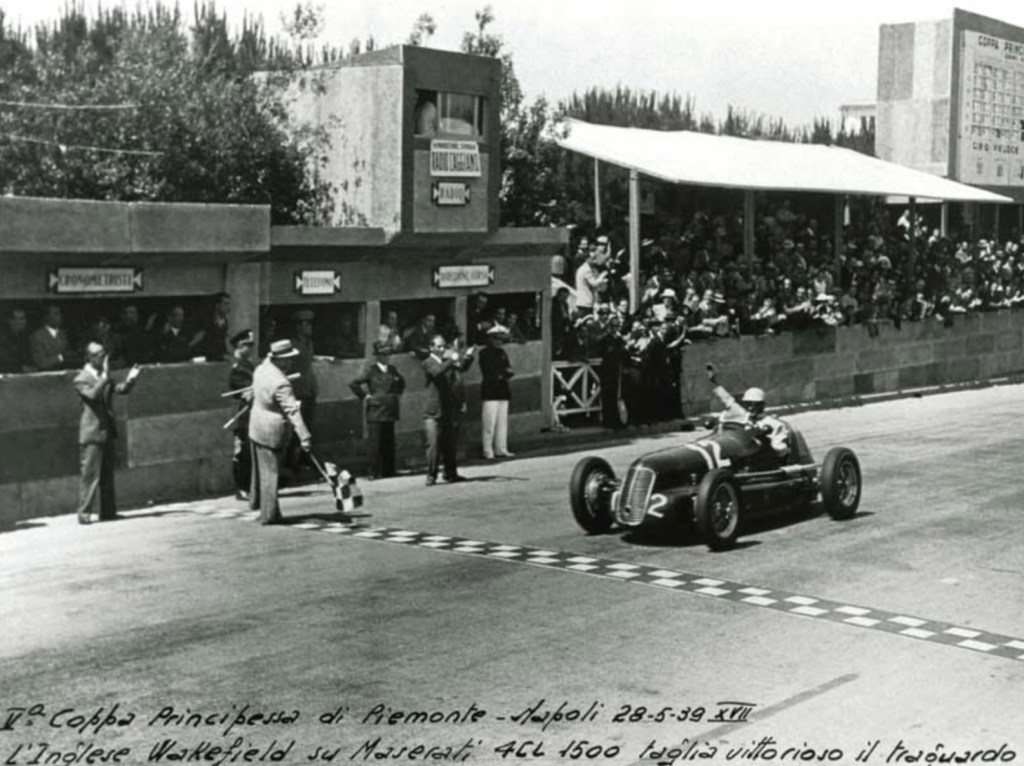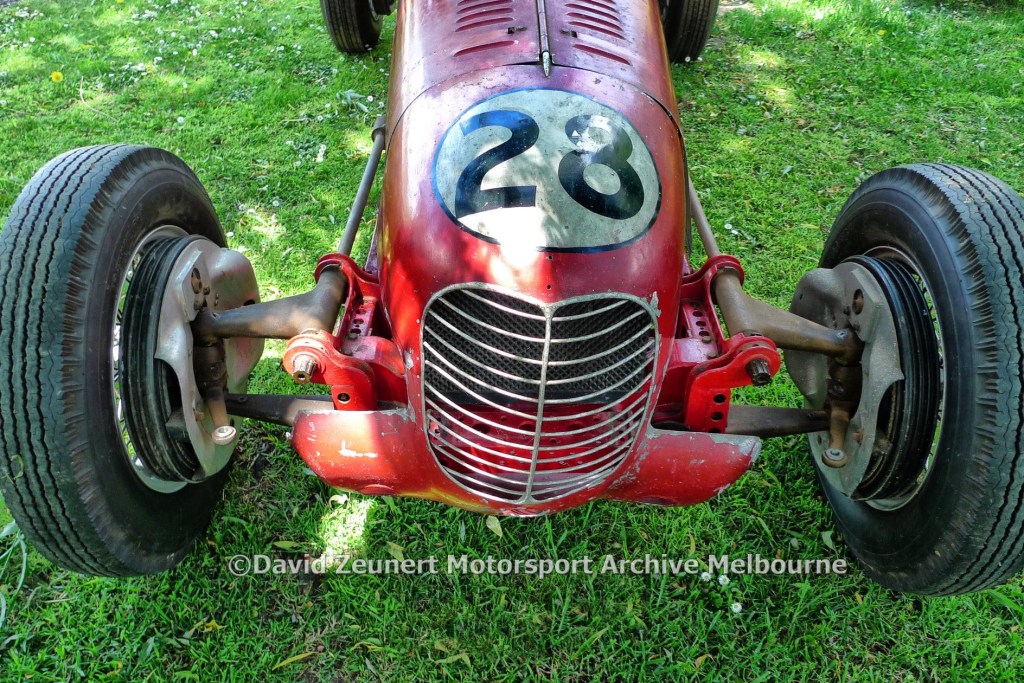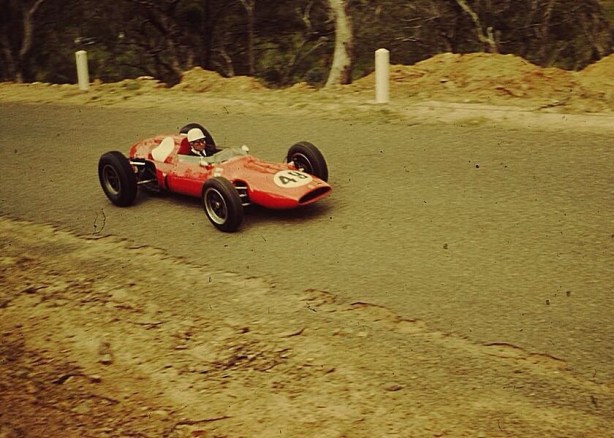
Arnold Glass and Clive Adams involved in a real estate dispute at Mount Druitt in August 1956. Maserati 4CL, ex-Sommer/Vennermark/Warren #1555/1579 and HRG Holden, ex-Ravdell now Shane Bowden.
Australian Motor Sports wrote about the change in ownership of the Maserati to Glass as follows, “The Late Cec Warren’s 1 1/2-litre Maserati has at last found a new home in Sydney. New owner Arnold Glass is perhaps better known as the only person in Australia possessing a Mustang fighter for his own private flying. This is a very potent piece of equipment as its performance is far superior to its wartime counterparts now that all the armament has been removed. If my memory serves me right, Arnold and the Mustang hold the Australia-New Zealand record even in this age of jets.”
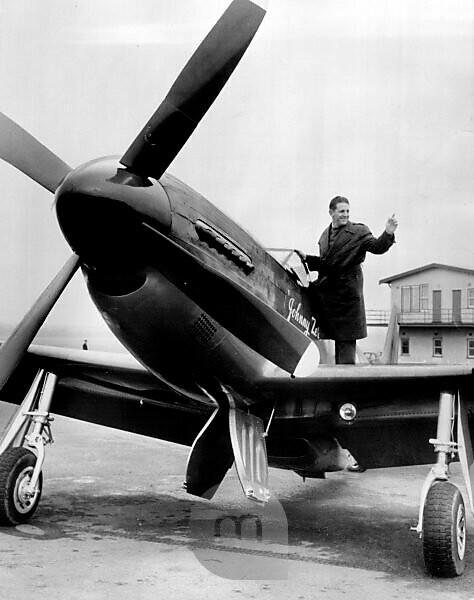

Glass’ Commonwealth Aircraft Corporation built Mustang – CAC CA-17 Mustang Mk20 c/n 1330 / A68-5 VH-BVM G-ARKD – was one of the first 80 CAC Mustangs (A68-1 – A68-80) assembled at Fishermans Bend, in Melbourne’s inner-west, from 100 sets of semi-completed P-51D components supplied by North American Aviation – powered by pre-loved Packard Merlins – shipped from the US.
Brought on by the RAAF as A68-5 at Laverton on July 6, 1945, after a sedentary life of storage at Point Cook, Benalla and Tocumwal, the plane was sold to Sydney’s Flt Lt James LD Whiteman for £100 pounds in January 1953, he planned a spot of record breaking. Those with an interest in the life of this aircraft should click here: https://www.goodall.com.au/australian-aviation/mustangs-civil/austcivilmustangs.html
Among his many accomplishments, Arnold Glass was an aircraft engineer, doing some of his time (mechanic and fitter and turner) at Butler Air Transport. During his motorcycle trading years, in 1947, he bought a Tiger Moth and learned to fly.
Enroute to building his Capitol Motors business into an automotive importing, wholesaling and retailing colossus, Arnold had plenty of cash to splash on cars, boats, babes…and aircraft. His Australian Aviation Investments Pty Ltd company bought the Mustang on May 31, 1954.
AAI’s base was at Bankstown Airport, Sydney. Amongst his early aircraft deals, he imported three Perceval Proctors from the UK for re-sale in 1951. Glass never lost his interest in aircraft, among his purchases down-the decades were Lear jets, two ex-RAAF Vampire jets in 1971, and in the days he was domiciled in Monaco, RAF Lightnings and other jet fighters…as one does.
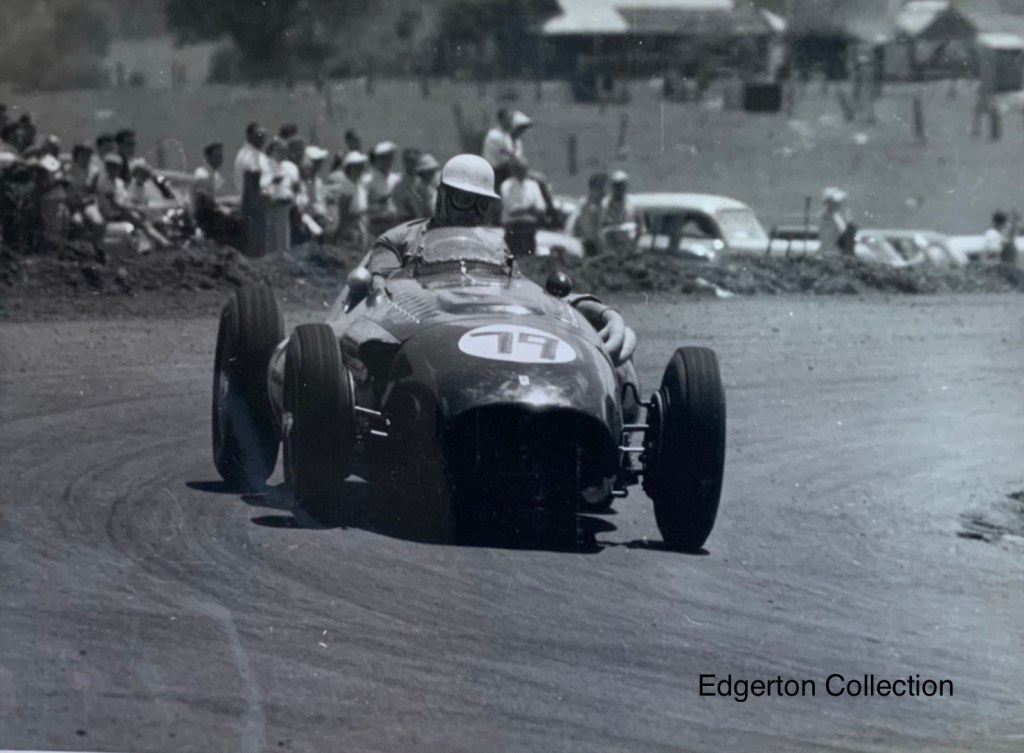
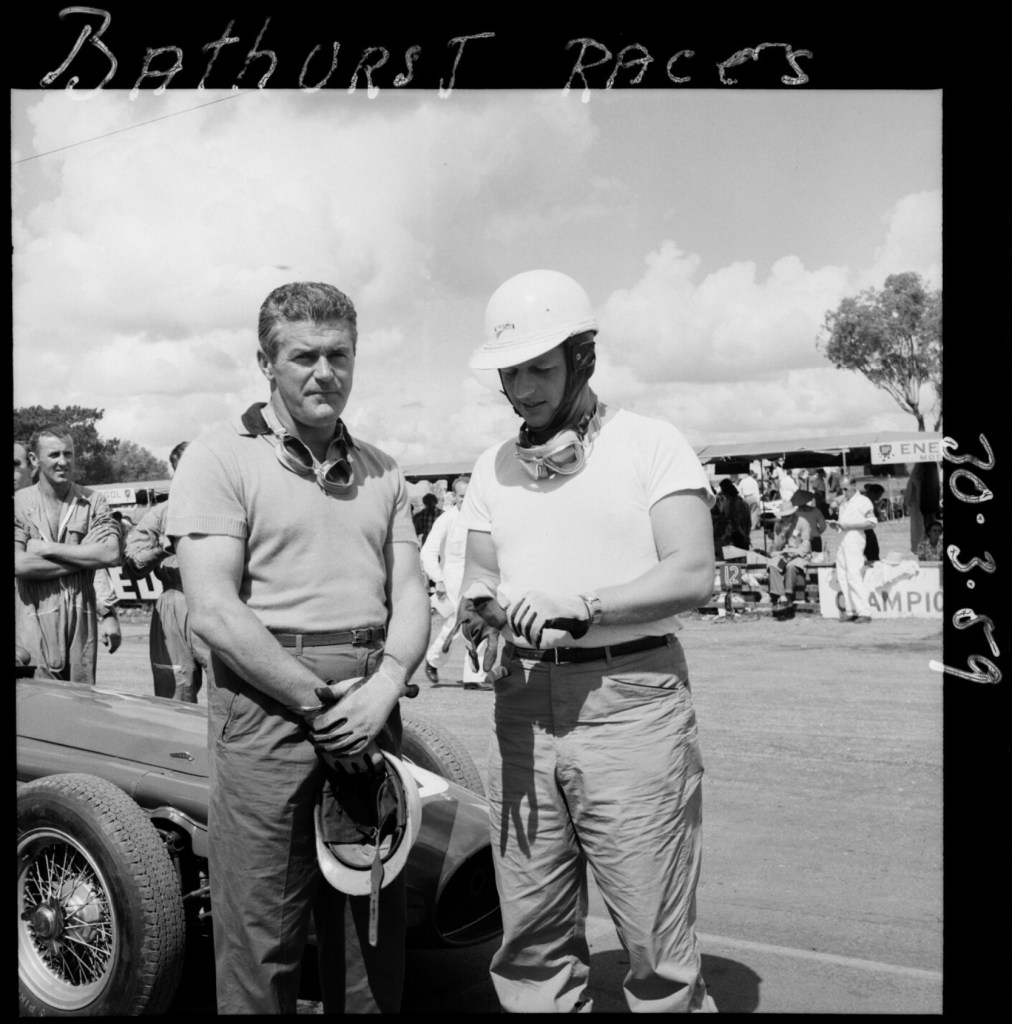
‘Trinkets’ Glass didn’t use the Mustang much. He named it Johnny Zero in recognition of the racehorse which won him over £30,000 in partnership with Bill Duffy. During this 1955-early 1960s period his businesses grew dramatically – Capitol Motors was selling over 1000 cars a year by the mid-1950s – so too his racing, so spare time for flying would have been at a premium.
Glass got to know works-BRM racer Ron Flockhart on his trips to Australasia and was happy to sell A68-5 to him for Ron’s planned international record breaking attempts; the deal was done on August 25, 1960. This plane is the first of Flockhart’s two Mustangs, not the one in which he died when he crashed into Melbourne’s Dandenong Ranges shortly after takeoff on April 12, 1962. That story is told here: https://primotipo.com/2018/05/31/flockharts-flights/
Arnold Glass raced plenty of interesting racing cars: among them a Ferrari 555 Super Squalo, BRM P48 and BRM P48 Buick V8 and a couple of Coopers but he was perhaps most at home in Maserati 250F chassis #2616, a low mileage machine raced initially in Australia by Reg Hunt in 1956, then Bib Stillwell before Arnold bought it.
Despite being a bit dated amongst the new-fangled Coopers in 1959, he and his forgiving Maserati finished fifth in the Gold Star with a pair of second placings in the South Pacific Championship at Gnoo Blas and the Bathurst 100 that Easter, both standout performances.
Still in the Maser, he was equal fourth in the Gold Star in 1960 with Lex Davison and his Aston Martin DBR4/300, the front-engined pair were behind four Cooper T51s driven by Alec Mildren, Bib Stillwell, Bill Patterson and Jack Brabham.


Glass’ last Gold Star points were won in a Lotus 27 Ford twin-cam 1.5 at Sandown and Lakeside in 1964. He was second in the one-race ANF 1 1/2-litre Championship at Warwick Farm on September 26 sandwiched behind the first and third placed Brabham BT6/BT2 Ford twin-cams of Greg Cusack and Roly Levis.
By 1976 Capital were selling over 23,000 Datsuns a year, primarily from a massive seven-hectare site on Parramatta Road, Auburn, Sydney. The scale of the operation attracted suitors, and in 1977 Australian National Industries Ltd bought the company for $A28.43 million. Arnold owned 49%, he walked away with $A13.47 million or $84.5 million in today’s dollars, big-biccies.
Reporting on the sale The Bulletin characterised “Capitol’s chairman, Arnold Glass as a gregarious , flamboyant former racing-car driver and divorcee, with a stable of girlfriends, a taste for high living and a fleet of powerboats moored in front of his harbourside pad at Cremorne.”
Glass joined the ANI board as deputy-Chairman, ‘retired’ to Monaco in 1984 but regularly visited Sydney, where he died aged 83 on January 16, 2009. A man who lived life to the full…and then some!
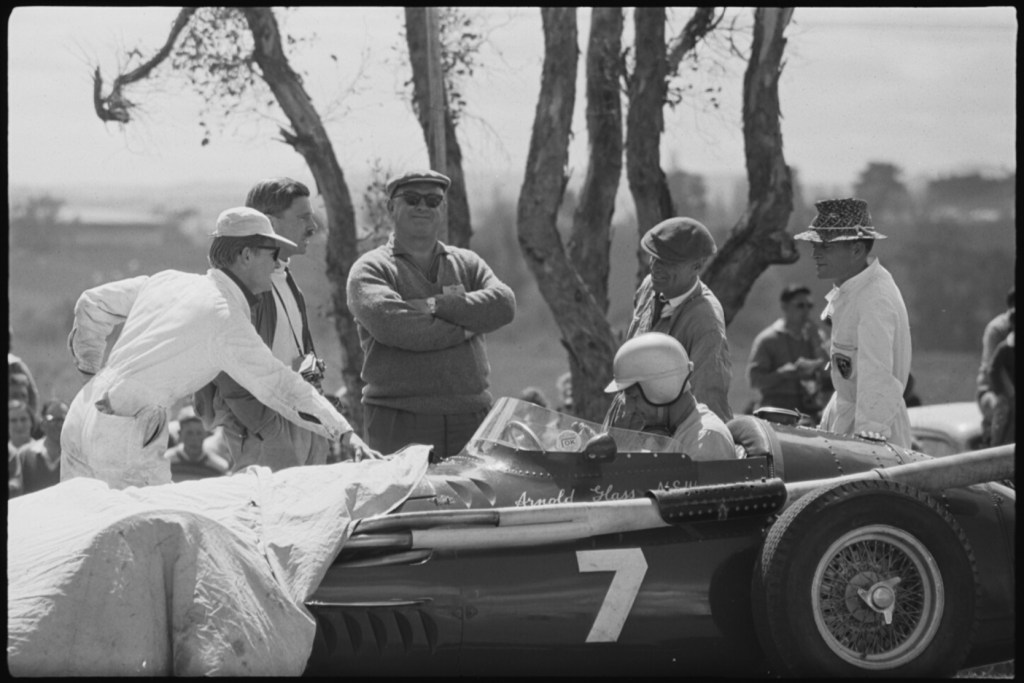

Credits…
Australian Motor Sports October 1956, Sydney Morning Herald-Mauritius Images, Geoff Goodall’s Aviation History Site, Howard Morris Collection, The Bulletin July 2, 1977, Brier Thomas, Ken Devine, Bob Donaldson, Obituaries Australia, Paul Cummins-Cummins Archive, Ron Edgerton Collection, oldracingcars.com
Tailpieces…
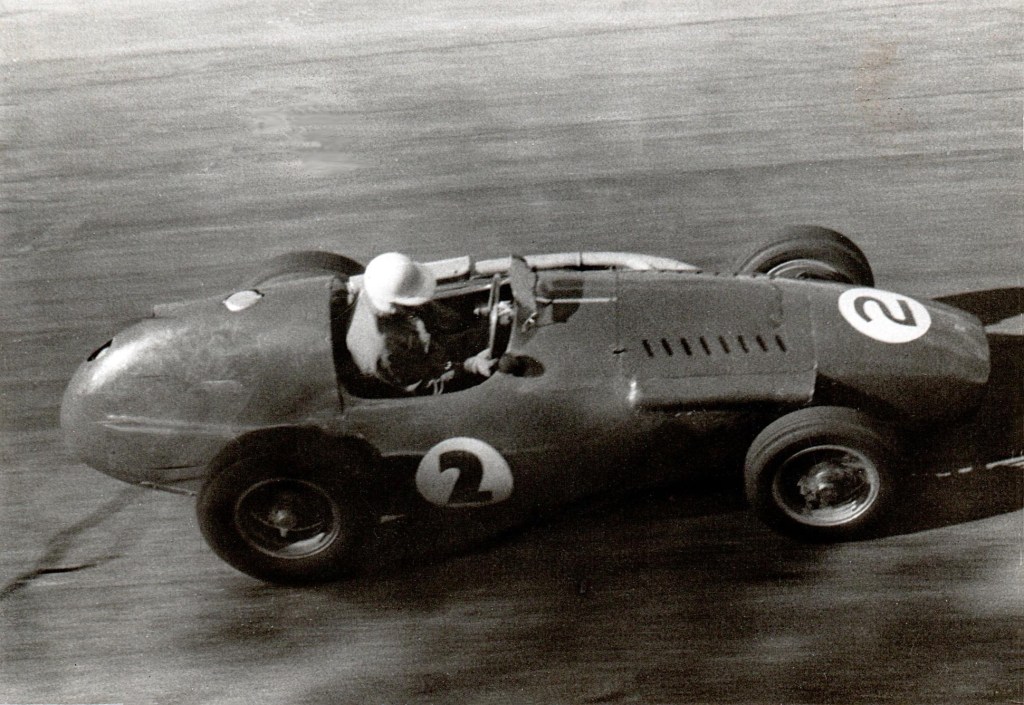
The Bathurst win that got away on the last lap, Ferrari 555 Super Squalo…
The Bathurst 100 was the feature race of the 1958 Easter weekend meeting. Arnold led a good field which included Ern Seeliger, Maybach 4 Chev V8, Alec Mildren’s Cooper T43 Climax, Bill Pitt’s Jaguar D-Type and Doug Whiteford’s Maserati 300S.
Looking good, the big Ferrari four-cylinder engine blew on the last lap, Arnold was able to roll up the rise and over the line (below) but not before Whiteford took the chequered flag, Glass was second.
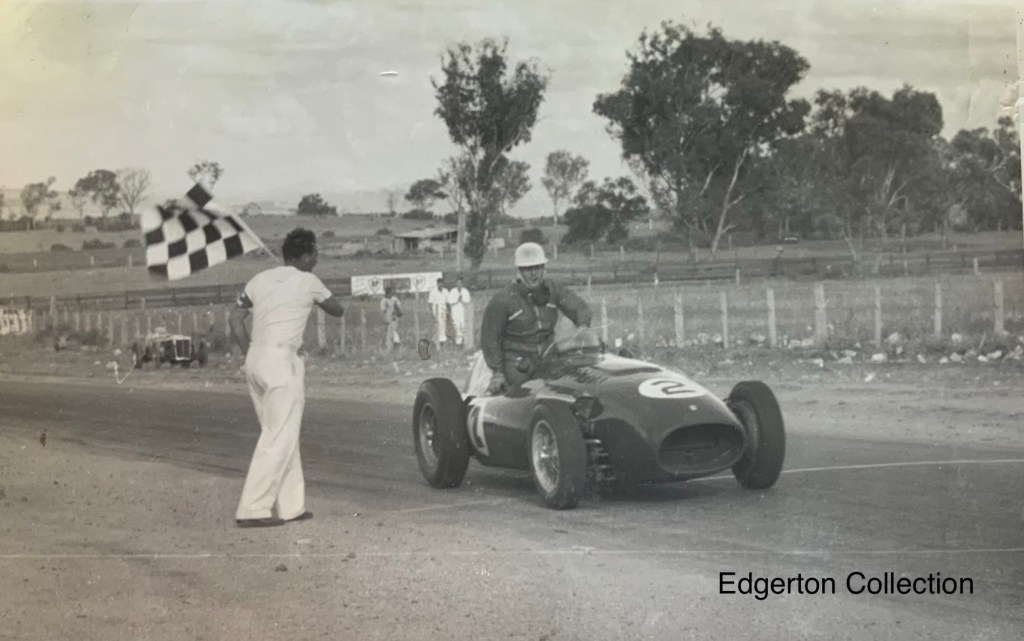
Paul Cummins wrote, “The 3 1/2-litre 860 Monza engine was sent back to the factory, but it wasn’t until the end of the year that a replacement was sent back. It was a 2 1/2-litre GP engine and Arnold wasn’t happy with the performance and later sold the car.” The 250F was soon in his garage…
Finito…


